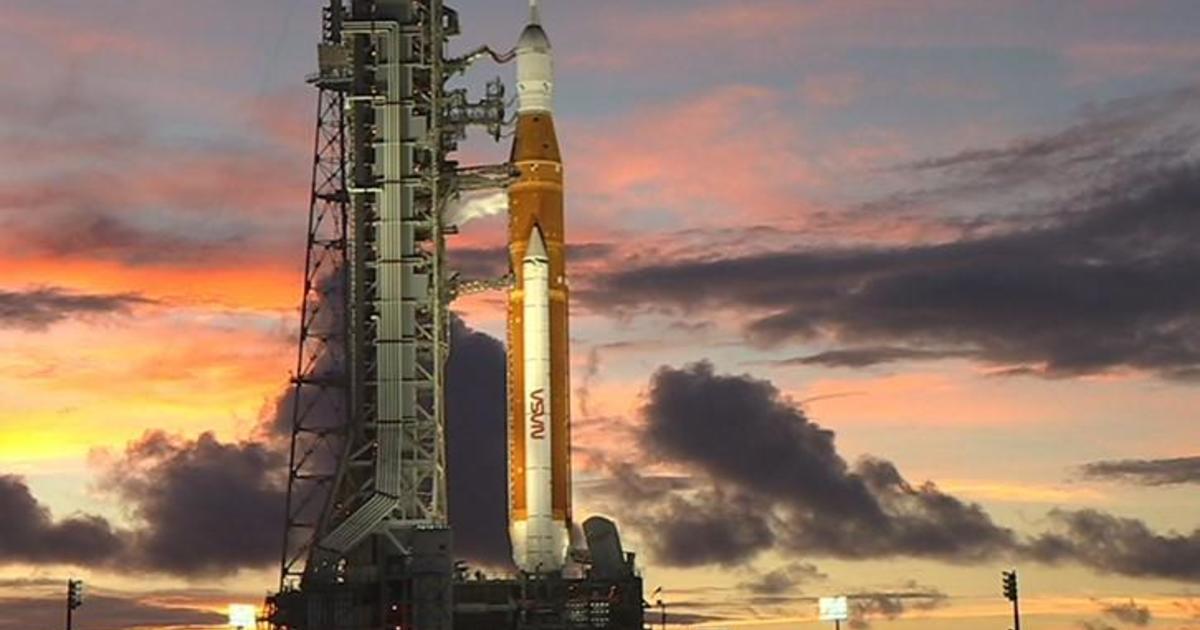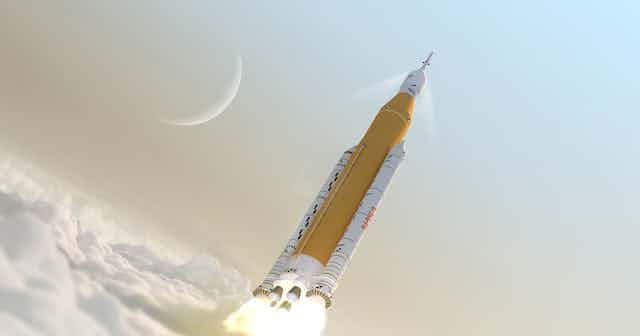Kennedy Space Center, Florida – NASA’s historic Artemis I moon mission launch has been delayed because engineers were unable to resolve a problem with one of the rocket’s four engines.

“It’s too early to say what the options are,” said Mike Sarafin, Artemis mission manager at a NASA press conference. “We really need time to look at all the information, all the data. We’re going to play all nine innings here. We’re not ready to give up yet.”

On September 2, the Space Launch System rocket and Orion spacecraft will have another opportunity to launch, but whether or not that day will see another try will depend on how testing goes.
Sarafin confirmed that “Friday is definitely in play” if the team can resolve the issue while the rocket sits on the pad within the next 48 to 72 hours.

The next launch window is September 2, opening at 12:48 p.m. ET and closing at 2:48 p.m. ET. The next window after that is September 5, opening at 5:12 p.m. ET and closing at 6:42 p.m. ET.
“Launch controllers were continuing to evaluate why a bleed test to get the RS-25 engines on the bottom of the core stage to the proper temperature range for liftoff was not successful, and ran out of time in the two-hour launch window,” according to an update from NASA. “Engineers are continuing to gather additional data.”
It wasn’t possible for the launch crew to incorporate the bleed test in earlier wet dress rehearsal tests mimicking the launch, therefore Monday was the first time proving it, according to Sarafin.
According to him, the problem right now doesn’t seem to be with the engine itself but rather with the bleed system that cools the engine.
“We need the engine to be at the cryogenically cool temperature such that when it starts, it’s not shocked with all the cold fuel that flows through it. So we needed a little extra time to assess that,” Sarafin said.
The team also saw an issue with the vent valve at the inner tank and the combination of issues convinced the team they needed more time, Sarafin said.
The process of rolling the rocket stack back into the Vehicle Assembly Building at the Kennedy Space Center, which takes 3 1/2 days, may take longer if a significant correction is required.
In order to gather information and determine what needs to be done, the launch team will maintain the rocket in its current configuration while continuing to investigate the engine problem. According to representatives of NASA, the Space Launch System rocket and Orion spacecraft are both stable.
Prior to the scrub, the launch team worked on a debugging strategy for one of the rocket’s four engines, which unexpectedly caused the countdown to be extended into a hold.
In order to prepare the engine for launch, hydrogen is cycled through it during engine bleeds. Engine #3 had a problem, but the other three engines are operating as planned.
“There were also a series of weather issues throughout the launch window. We would have been a no-go for weather at the beginning of the window due to precipitation. Later on in the window, we would have been no-go for lightning within the launchpad area,” Sarafin said.
Prior to the window opening at 8:33 a.m. ET, 80% favourable weather conditions were predicted; however, as that time approached, the forecast changed.
After the launch was postponed, Vice President Kamala Harris, who accompanied second gentleman Doug Emhoff to Florida’s Kennedy Space Center to watch the launch, emphasised the United States’ commitment to NASA’s Artemis programme.
Mission overview
Orion will launch with Artemis I and travel 1.3 million miles to the moon, loop around it, and then return to Earth over the course of 42 days (2.1 million kilometers). The capsule will splash down in the Pacific Ocean off the coast of San Diego when it comes back to Earth.
Although there are no humans on the passenger list, Orion will also be carrying three mannequins and a plush Snoopy toy.
Although the crew of the Artemis I may seem a little odd, each member has a specific function. Snoopy will act as the zero gravity indicator, which means that once the capsule reaches space, he will start to float inside.
Commander Moonkin Campos, Helga, and Zohar, the mannequins, will measure the deep space radiation that potential future astronauts might encounter and test a new suit and shielding technologies. Inside Orion is a biology experiment to study how life responds to radiation that contains seeds, algae, fungi, and yeast.
Throughout the voyage, photos and video from cameras inside and outside of Orion will be shared. This includes live views from the Callisto experiment, which will record a stream of Commander Moonikin Campos sitting in the commander’s seat. Ask your Amazon Alexa-enabled device where the mission is every day if you have one.
The rocket and spacecraft will be tested and put through their paces for the very first time before they carry astronauts to the moon on Artemis II and Artemis III, slated for 2024 and 2025 respectively.

